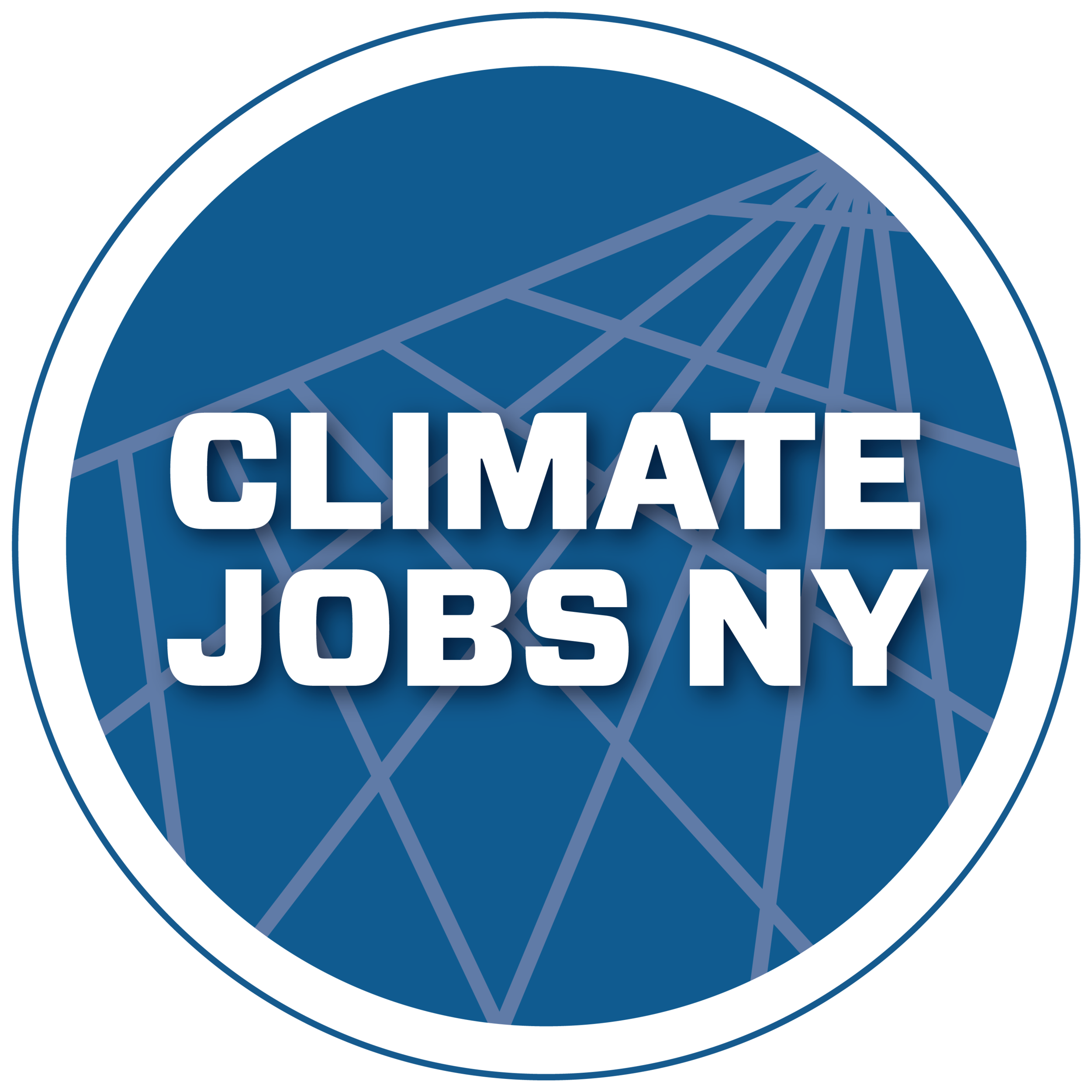A Complete Climate Jobs Roadmap for NYC
→
A Complete Climate Jobs Roadmap for NYC →
Climate Jobs NY adopted Climate for Change, A Complete Climate Jobs Roadmap for NYC, a new report released today by Cornell University’s Labor Leading on Climate Program. The report presents a roadmap for New York City to fight the climate crisis, make NYC safer and address racial and economic inequity by investing in a pro-worker renewable energy transition. The report, which finds that New York City’s climate goals are not ambitious enough and that climate work is not happening at scale, outlines a concrete plan for the City to slash emissions and create high-quality union careers.
The following are just a few examples of the Climate Jobs recommendations in this report and a bold vision for strengthening New York’s economy, tackling climate change, and addressing racial and economic inequality through the creation of high-quality jobs targeted at those who need them most.
BUILDINGS ENERGY
TRANSFORM ALL K-12 NYC PUBLIC SCHOOLS TO BE CARBON-FREE AND HEALTHY BY 2030: Making this investment would create thousands of good jobs in the communities that need them most, while making schools healthier and safer for over 1.2 million students, teachers and staff.
TRANSFORM NYCHA TO BE CARBON-FREE AND HEALTHY, TRANSFORM NYC HEALTH + HOSPITALS TO BE HIGH-EFFICIENCY AND HEALTHY BY 2030: Safer and healthier NYCHA buildings would benefit 550,000 NYCHA residents and employees and grow union job opportunities for residents. Safer and healthier NYC H+H buildings would benefit over 1.2 million patients per year and staff.
ENERGY
INVEST IN LOCAL OFFSHORE WIND DEVELOPMENT AND INVESTIGATE THE POTENTIAL FOR GREEN HYDROGEN PRODUCTION AT PORTS AND SUBSTATIONS: Offshore wind investment is critical to NYC’s energy security, and a feasibility study on green hydrogen hubs at urban offshore wind ports would be the first of its kind.
EXPAND NYC’S ORGANICS COLLECTION AND DEVELOP BIOGAS AND COMPOST PRODUCTION UNDER A PLA: Expanding biogas production from food waste would generate millions in City income, create 1,494 high-quality direct jobs, and power critical infrastructure like hospitals.
TRANSPORTATION
REQUIRE A PUBLIC BUILDOUT OF 50,000 ELECTRIC VEHICLE CHARGERS BY NYC DOT UNDER A PROJECT LABOR AGREEMENT: Treating public charging stations as critical infrastructure would create 1,496 installation jobs as well as local jobs in electric vehicle and charger manufacturing, operations and maintenance.
MANDATE ELECTRIC VEHICLE INSTALLATION TRAINING PROGRAM (EVITP) CERTIFICATION FOR CHARGER INSTALLATIONS TO SUPPORT GOOD JOBS AND ENSURE SAFETY: This mandate would create a well-trained, green workforce focused on building out public charging stations on New York City streets.
RESILIENCE AND ADAPTATION
WORKFORCE DEVELOPMENT MAKE EVERY NYC ROOF A GREEN ROOF OR COOL ROOF BY 2030: Requiring an energy-saving reflective paint or flood risk-reducing vegetation layer on every roof could create over 23,790 union jobs per year for eight years and reduce energy costs for renters and owners by 10%.
CONVERT 10% OF NEW YORK CITY TO PERMEABLE OPEN STREETS BY INCREASING PERVIOUS SURFACES WITH PREVAILING WAGE AND LOCAL HIRING REQUIREMENTS: This could create 22,313 direct jobs from installing permeable pavement and green infrastructure to prevent flooding. It could increase economic activity for 150,000 small businesses by adding streetside capacity.
WORKFORCE DEVELOPMENT
EXPAND FUNDING FOR DIRECT ENTRY PRE-APPRENTICESHIP TRAINING: Expanding program funding and expanding allowable costs would ensure pathways to good union jobs. Funding stipends, child-care vouchers, and transportation assistance could bolster participation from frontline and historically marginalized communities.
EXPAND THE MAYOR’S OFFICE OF TALENT AND WORKFORCE DEVELOPMENT: Expanding this office and facilitating coordination among agencies would successfully provide economic opportunities for those who need it most.
COMMUNITY HIRE: Passing State legislation that allows the City to use targeted hiring in its bid specification would ensure that community hiring goals can be expanded and implemented effectively.

